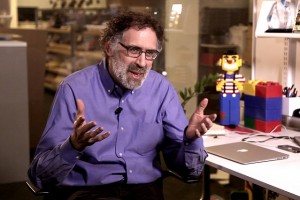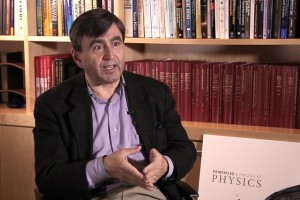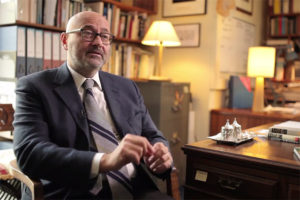Rethinking Learning in the Digital Age
Professor Mitchel Resnick on ways to transform education, the Lego Mindstorms, and the idea of constructionist...
Just as there are many ways to interpret the goal or the ideal of liberal arts education, there are also many ways or many means in which it has historically been happening. Following the discussions in Russia about the introduction of the 2+2+2 curriculum and hearing some people making connections between this policy proposal and the idea of liberal arts education, I think all of us can benefit from a small reminder about the typical ways of structuring curricula in liberal arts institutions.
The benefit of this curriculum is that for every person who graduates, you can assume what they have learned, you can assume what they experienced in their education: it is clear what this education stands for. The problem with that, of course, is that not everyone likes that, and it’s very difficult to agree on that type of curriculum even within one institution, not to mention the country. So we can see that in our elementary and secondary education, there is still a model of a prescribed curriculum that is getting in some countries into tracking, that is getting to some distinction at the secondary level, but there is a kind of general understanding that all of the students, all of the pupils should learn how to read and how to write and how to count because without it you cannot go forward. So, in this sense, this curriculum is prescribed.
On the opposite side of this approach, you can say that there should be no limitations on the freedom of a student about what they should be learning, that you either believe that the student is adult and they should be making their choices and they should bear responsibility for that, or you, for example, believe that the main role of the university is to expose students to advanced knowledge and there is just no way to map all of the ways in which that can successfully happen, so the students should be given the freedom to choose the courses.
Perhaps, in many cases, they should be given an academic advisor that will be discussing with them all the choices, that is experienced and that can tell them: well, you are making wrong choices, or: why don’t you do that? or: what is your goal that taking those courses is going to take you there?
So this is a model of an open curriculum basically in which there are no restrictions, so you study for a certain time, and then after you pass a certain number of courses or you feel you’re ready, you leave the institution, and you become an educated person. The benefit of that is, of course, that students have a lot of freedom, and they are more or less happy about it. But the problem is that not all of them would: many of them will find themselves confused, many of them will find themselves anxious, and some of them will graduate with a complete mess of courses that it’s just not clear why they have taken them, and they may be regret doing that. And, of course, there is a problem with the quality and comparability of the results across those different projects.
If we take a radical example of a prescribed curriculum, we do not see it very often in higher education institutions that claim the liberal arts model today, but there are examples, for example, in the modern liberal arts in Winchester, students are basically not choosing courses because there are not enough students, and the idea of the curriculum is fairly set. In Gutenberg, the liberal arts program is actually focused on reading classical literature in Latin and in ancient Greek, and they do very little (if any) electives at all because the point of the curriculum is clear: it is a set kind of discipline, and you just follow that.
But there are at least two other models in between. One model is something that is a combination of a core, a major and electives, which is probably one of the most famous, although not the most popular, models of doing education in liberal arts education in which you have one part of the curriculum that is prescribed for every student, then you have some other parts that are prescribed for students who want to graduate with a diploma in something particular, so these are major courses that they are taking. They are either prescribed or not, but you kind of have three parts of your curricular plate: you have what is taken by everyone, what is taken just by the specialists and then something that is chosen directly by you, meaning the electives.
For example, Colombia is still having a decent core curriculum. Core curricula have risen and fallen during the 20th century in the US, first as a reaction to the postulates of open curriculum and losing the integral character of the curriculum, but then they were accused that there is less and less of a need for a core an increasingly specialized university and also the content of the core is just super difficult to agree on.
Many institutions, ourselves included, are fighting over what should be in the core, whether there is a point of requiring all the students to take those particular courses, or even if we agree that they all should be taking a course in great books, then you have the next question: what should be those great books that all of them should read.
As you can imagine, when intelligent people are trying to get into an argument about academic stuff, this discussion might never end, and this is one of the reasons why, operationally, more and more universities have abandoned the model of a coherent core for all of the students and moved to something that is called the distribution requirement model.
That model means that although we agree that students should achieve certain learning outcomes or should be exposed to certain disciplines or systems ways of thinking or certain ways of communication, they should at the same time not be required all of them in an indiscriminate manner to do the same course. So some students will fulfil a science requirement by taking the Introduction to Physics course, which is known as easy, but this is what they do. Others will satisfy that with another course that is, for example, more advanced or closer to something that they are interested in, or in astronomy, or in space travel, or in microbiology. So, the idea behind the distribution requirement is that there is more than one way to satisfy the requirements set in the curriculum, and it is not a capitulation for the institution to admit that.
The problem with that, however, is that back in the 80s, this model, when it became very, very popular in the US, was accused of being something of a cafeteria model of education. So you are looking for – okay, I need to eat a soup, which soup do I like? Okay, I don’t like those soups, but I will choose this one. And then you end up having a meal that is constructed by a range of courses chosen like that for a range of better or worse reasons, and at the end of the day, there is still no coherence in your educational model, but at least the customer is satisfied. So the conservatives in the US were asking: why do we proceed with something like that?
On the other hand, the progressives were also not really happy with the distribution model because it allowed students to avoid taking certain courses that were deemed beneficial for them by society: for example, courses on contemporary race problems in America. Some people believe they should be required for all students, not just the courses on how the government operates. Others believe that there should be a choice about that.
So, in those four ways, we see how universities are struggling with the same problems that we have in our lives and how our societies are disagreeing about how to do things. But I think it’s important to remember that each of those models has some benefits and some drawbacks obviously, and people who are responsible for designing curricula and especially for implementing policies should be aware of the possible options (there are more options than just these four) and look for something that fits their institution, something that is feasible and something that can fit the vision that they particularly have for their own institution. I think that that will bring us a lot of good things down the road.
I think the well-designed core curriculum is a statement of what the institution thinks about the world. It’s a statement about whom do we want our graduates to be regardless of what individual choices they will make and what trajectory choices they are attracted to. I think that the core model is the only one that allows you, as an administrator, to work on real educational innovations. It is the most burdensome to implement, the most burdensome to even agree and to conceive, but I personally believe that this model allows us as institutions to have conversations about what education should be, why we are here, and what we want to achieve. I think this is the type of conversation that if we are not having at the universities, we can just as well close tomorrow.

Professor Mitchel Resnick on ways to transform education, the Lego Mindstorms, and the idea of constructionist...

Physicist Eric Mazur on beginners' difficulties, teaching each other and making sense of information

Historian Alessandro Scafi on the four rivers of paradise, Calvin's mapping of Eden, and the first attempts to...